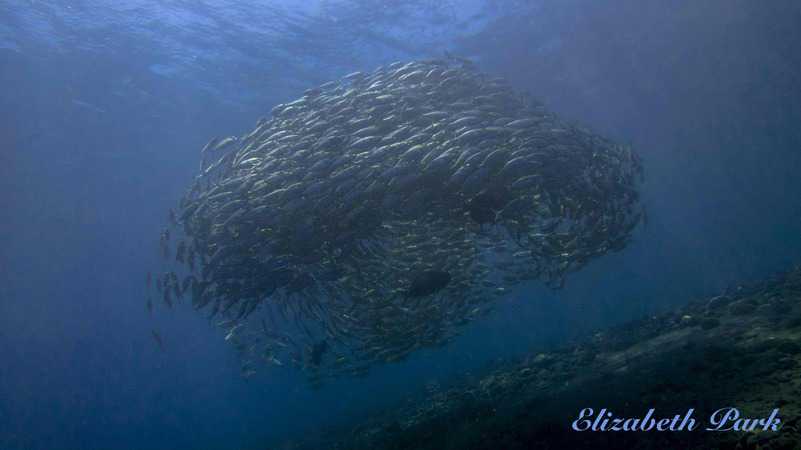In Tulamben we often find a school of fish. This school of fish always swim in circles, but why? And who decides in which direction they swim?
There are two types of groups of fish, schools and schoals. Schools are highly organised groups of fish, while schoals is a loosely aggregated group of fish.
Some schooling fish are obligate schoolers, they spend most of their life in schools and become agitated when separated. Facultative schoolers spend time in schools during spawning season, for feeding and other special occasions.
A school of fish doesn’t have a leader, but it comes together on their own, it’s a self-organised system. The individual fish make decisions based on internal motivation, but mainly by imitation of the responses of the neighbouring fish, causing the collective behaviour of the school.
In a blink of an eye one fish can be turned the other way, causing his neighbours to turn, their neighbours to turn and within a second the whole school is turned. They don’t only watch their neighbours turn but they have a special organ, called the lateral line that allows them to feel movement and pressure differences around them. The fish thus not only see but also feel the changes in the school.
Schooling fish use the advantage of the group as protection against enemies, to feed, but also for spawning and for more efficient swimming. A school of fish can be confusing for predators, the predator won’t be able to pick out the individual fish anymore and thus the whole group might get away.
When feeding a group has the advantage that many eyes see more, so a prey is found more effectively. In spawning season the schools are collections of male and female fish, interacting all together to find the right mate.
To cover distances it’s more efficient to swim in schools (hydrodynamic), think of the cyclists in the Tour de France, using the advantage of the group to cover great distances on a daily basis.
Although we know a lot about how the schools are formed and how the fish interact with each other there is still a lot unknown. Some predators use schools of fish to their advantage, for example thresher sharks and killer whales, so is it always the best idea to swim in schools? It’s not certain how complicated movements are coordinated, or how the fish go from random to perfect school formation in seconds. There is still a lot to learn!
Do you want to see a school for yourself? Come dive with us in Sanur and discover how special the ocean is!
Picture credit: Elizabeth Park







